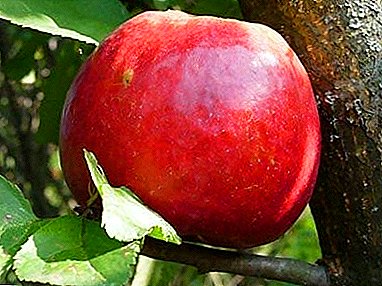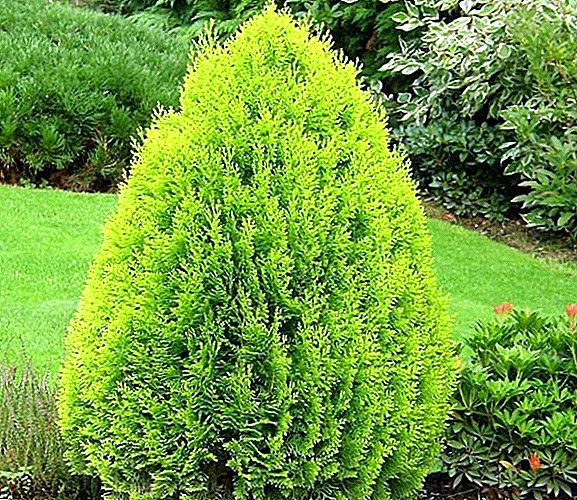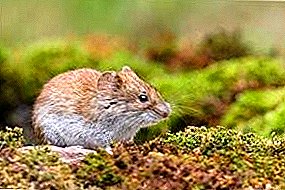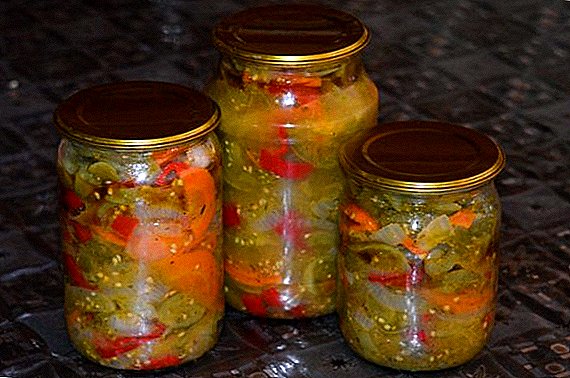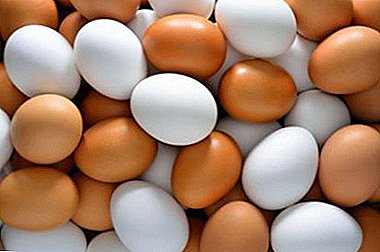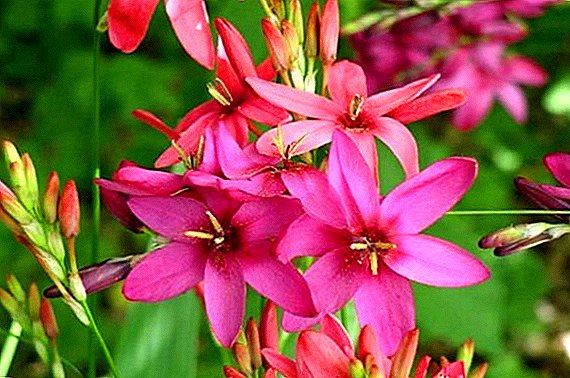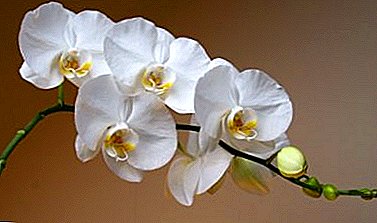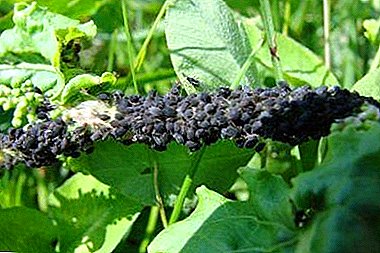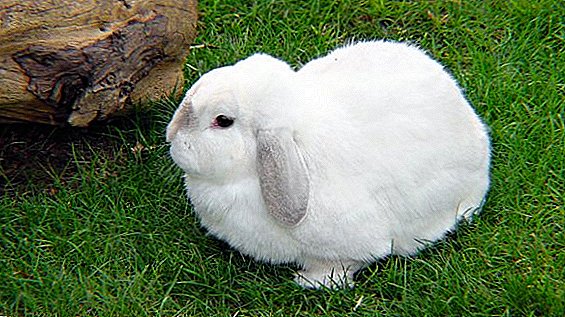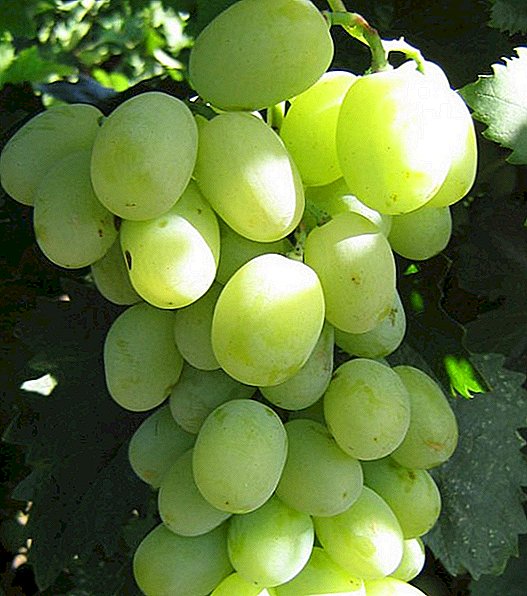 Grapes - sunny culture, which is associated with summer and heat, juicy sweet berries are unlikely to leave anyone indifferent. Among the many varieties of culture, the Adler variety stands out favorably for its characteristics, and we will talk about its cultivation today.
Grapes - sunny culture, which is associated with summer and heat, juicy sweet berries are unlikely to leave anyone indifferent. Among the many varieties of culture, the Adler variety stands out favorably for its characteristics, and we will talk about its cultivation today.
History of creation
The history of the Adler variety is not yet finished: work is still underway to improve the characteristics of the new hybrid. Brought new seedling by crossing varieties "Augustine" and "Talisman" scientists of the All-Russian Research Institute of Viticulture and Winemaking them. Ya. I. Potapenko in Novocherkassk, Russia. Recommended for cultivation in the middle lane, in cold climates is considered a covering culture.
Did you know? Grapes are one of the symbols of Armenia. According to the biblical story, Noah, moored to Mount Ararat, planted a vine on the slope as a symbol of fertility and abundance.
Culture description
"Adler" has incorporated the best qualities of both "parents". The short growing season allows you to grow it even in the conditions of a short summer period and early winter. 
Bush and shoots
Shrubs tall, branched, over the season shoots grow to five meters. Young branches of light green color, strong and flexible, grow lignified as they grow. The leaves on the shoots are not many, but the leaf plates are large, bright green. The rapid growth rate and the ability to firmly twist the support allow you to apply the variety in gazebo culture.
Clusters and berries
 Berries form medium dense large cluster weighing up to 600 g. Large oval-shaped berries with thin skin have fleshy and juicy flesh. Taste is dessert, with moderate sourness. As the ripening bright green berries become the color of light amber, there is a high ability to accumulate sugar. The average weight of berries - 12 g.
Berries form medium dense large cluster weighing up to 600 g. Large oval-shaped berries with thin skin have fleshy and juicy flesh. Taste is dessert, with moderate sourness. As the ripening bright green berries become the color of light amber, there is a high ability to accumulate sugar. The average weight of berries - 12 g.
Despite the thinness of the skin, almost imperceptible to taste, the grapes after ripening are stored on clusters for about a month. At the same time, neither taste nor presentation is lost.
Find out what properties grapes have, how and when to pick grapes.
The main characteristics of the variety
The characteristics of the variety and the feedback from gardeners are generally positive, the grapes tolerate transportation well.
Winter hardiness and disease resistance
During the research, the ability to withstand temperatures down to -24 ° С was confirmed. Revealed resistance to the most common diseases of grapes:
- gray rot;
- downy mildew;
- powdery mildew (ashtray).
Ripening
"Adler" ripens early, in mid-August in the southern regions already harvest the first harvest. In the northern regions - at the end of the month. The ripening period after blooming buds lasts up to 115 days.
Application
The most valuable variety for winemakers, juicy berries with a dessert flavor suitable for the blame, and for stronger drinks, for example, liqueur. Mild acid and succulence allow you to cook fruit drinks and juices, use them fresh and roll up for the winter.  The fruits of "Adler" are suitable for making raisins, syrup, confiture. Fresh berries are added to savory salads, they are decorated with desserts.
The fruits of "Adler" are suitable for making raisins, syrup, confiture. Fresh berries are added to savory salads, they are decorated with desserts.
It is useful to read about the preparation of grape wine, juice, raisins, jam.
Growing conditions
The most suitable for cultivation are the southern regions and areas with a temperate climate. When choosing a place, preference should be given to the south side, protected from drafts and as open to the sun as possible. You should not have a landing in the lowlands, where cold air accumulates, and in the spring - melt water.
An ideal soil variant is chernozem, but on the condition of drainage and saturation with fertilizers, any soil will do, it is desirable to deacidic acid soil with lime. The location of groundwater should not be too close: the root system develops deep into the soil, excess moisture can cause rotting of the roots.
How to plant seedlings
Early varieties are recommended to be planted in spring, especially in regions with cold winters. During the summer-autumn period, the plants will take root well and will be able to overwinter without problems. In addition, the spring saplings for the third year will give the first harvest. Favorable for planting period - mid-end of April, when there is no risk of return frost. Algorithm of actions:
- The plot for planting is prepared in the fall: they dig deeply, clearing weeds, and apply organic fertilizer (humus, compost) to the soil.
- The hole for planting is dug two weeks before the process, measuring 80x80, a drainage (broken brick) is laid at the bottom with a layer of 10 cm. The distance between the seedlings should be two meters if you plant a large vineyard, the distance between the rows is three meters.
- To facilitate subsequent irrigation, a plastic pipe with a diameter of up to five centimeters is buried along the edge of the hole. In colder regions, it is advisable to deepen the seedling by half a meter to prevent the roots from freezing. The root neck should remain above the ground surface. Straighten the roots and cover the sapling with soil, mixing it with rotted manure.
- After landing, pour (enough buckets of water) using a pipe.

Important! Pristvolny circle is desirable zamulchirovat sawdust or straw.
Care Tips
The basis of success in the cultivation of grapes - attentive care for him, especially in the early years of the plant.
Watering and soil care
In the first years of life, grapes build up the root system, so moisture is especially important during this period. In summer, the plant is watered once a week, closer to autumn - two or three times, depending on precipitation. Care must be taken to ensure that the soil is always slightly wet.  For the formation of lush clusters of sweet juicy berries, the plant needs nourishment and oxygenation. It is important to clear the soil around the plant from weeds that absorb nutrients from the soil. It is equally important to loosen the soil, so that oxygen penetrates into the deep layers, feeding the roots of the culture.
For the formation of lush clusters of sweet juicy berries, the plant needs nourishment and oxygenation. It is important to clear the soil around the plant from weeds that absorb nutrients from the soil. It is equally important to loosen the soil, so that oxygen penetrates into the deep layers, feeding the roots of the culture.
Read also about the intricacies of caring for grapes from spring to autumn, during flowering.
Top dressing
Additional food will be feeding, the best option would be organic: compost, humus, manure, chicken litter. Fertilizers are applied in the spring under each bush for a bucket to stimulate the swelling of the kidneys. In the summer period - twice by the root method so that the color does not crumble. Before flowering spend spraying a solution of boric acid, always in dry and windless weather, in the evening.
Support for the vine
The vine needs a support, in the first years it may be a temporary option, but in the future it should be considered a construction in the form of a trellis made of galvanized materials.
The support from a galvanized grid will serve for many years and will sustain the weight of the lignified rod, especially during fructification. 
Pruning grapes
Spring pruning is carried out to form a bush when the air is heated to five degrees of heat. Leave strong, fruiting shoots that form the basis of the skeleton. Weak, damaged, unpromising shoots are removed.
Important! At the same time, bushes are sprayed with blue vitriol for the prevention of fungal diseases.
In summer, pruning is reduced to pinching to stimulate flowering and remove excess shoots.
In the autumn, a rejuvenating shearing is carried out, in which old shoots are removed.
Preparing for the winter
After the rejuvenating autumn pruning, the vine is carefully removed from the support and covered with any special material (spanbond) or spruce fir branches. 
Familiarize yourself with the rules for processing grapes before hiding
Advantages and disadvantages
Adler’s undeniable advantages include the ability to grow crops in regions with a cold climate. Also his merits think:
- large berries with excellent taste characteristics;
- the ability to maintain the presentation during transportation;
- disease resistance;
- early maturation (important for regions with a short summer);
- versatility in the application;
- high survival rate in a new place;
- stable yield indicators.
TO disadvantages include intolerance to the heat. In the intense heat, young saplings need pritenyat to prevent burns of foliage.
Did you know? According to legend, pruned for better fruit bearing grapes must donkey. The ancient winegrowers noticed that the bushes, eaten by animals, began to grow and bear fruit better.
Video: Adler grapes
To summarize: the Adler variety does not require special skills, either in planting or in subsequent care. It has excellent varietal characteristics, and the harvest pleases with both quality and quantity.


